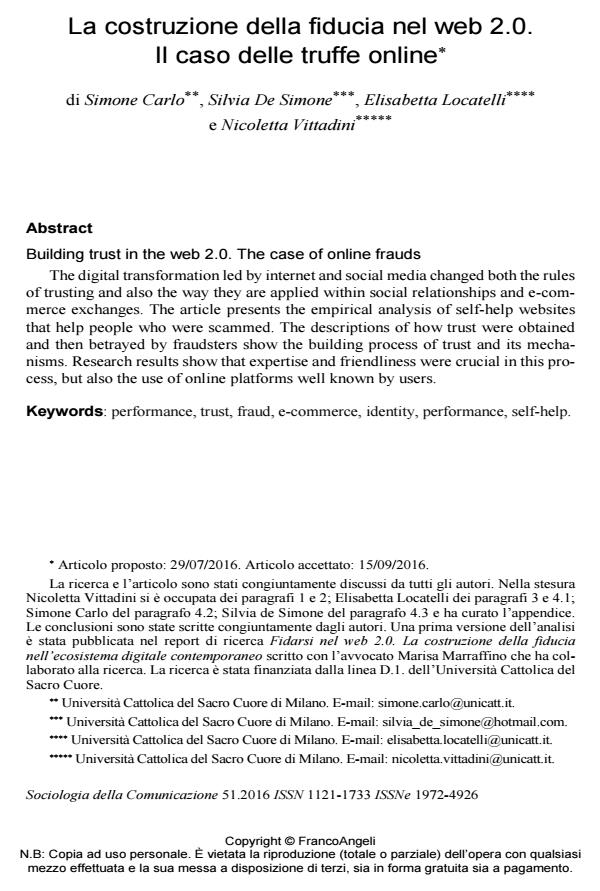Building trust in the web 2.0. The case of online frauds
Journal title SOCIOLOGIA DELLA COMUNICAZIONE
Author/s Simone Carlo, Silvia De Simone, Elisabetta Locatelli, Nicoletta Vittadini
Publishing Year 2016 Issue 2016/51
Language Italian Pages 19 P. 64-82 File size 224 KB
DOI 10.3280/SC2016-051005
DOI is like a bar code for intellectual property: to have more infomation
click here
Below, you can see the article first page
If you want to buy this article in PDF format, you can do it, following the instructions to buy download credits

FrancoAngeli is member of Publishers International Linking Association, Inc (PILA), a not-for-profit association which run the CrossRef service enabling links to and from online scholarly content.
The digital transformation led by internet and social media changed both the rules of trusting and also the way they are applied within social relationships and e-commerce exchanges. The article presents the empirical analysis of self-help websites that help people who were scammed. The descriptions of how trust were obtained and then betrayed by fraudsters show the building process of trust and its mechanisms. Research results show that expertise and friendliness were crucial in this process, but also the use of online platforms well known by users.
Keywords: Performance, trust, fraud, e-commerce, identity, performance, self-help.
Simone Carlo, Silvia De Simone, Elisabetta Locatelli, Nicoletta Vittadini, La costruzione della fiducia nel web 2.0. Il caso delle truffe online in "SOCIOLOGIA DELLA COMUNICAZIONE " 51/2016, pp 64-82, DOI: 10.3280/SC2016-051005